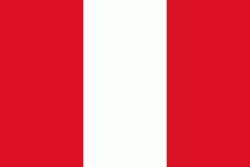Peruvian sol
S/
The sol (plural: soles; currency sign: S/) is the currency of Peru; it is subdivided into 100 céntimos ("cents"). The ISO 4217 currency code is PEN.The sol replaced the Peruvian inti in 1991 and the name is a return to that of Peru's historic currency, as the previous incarnation of sol was in use from 1863 to 1985. Although sol in this usage is derived from the Latin solidus, the word also means "sun" in Spanish. There is thus a continuity with the old Peruvian inti, which was named after Inti, the Sun God of the Incas.
At its introduction in 1991, the currency was officially called nuevo sol ("new sol"), but on November 13, 2015, the Peruvian Congress voted to rename the currency simply sol.
Currencies in use before the current Peruvian sol include:
* The Spanish colonial real from the 16th to 19th centuries, with 8 reales equal to 1 peso.
* The Peruvian real from 1822-1863. Initially worth 1⁄8 peso, reales worth 1⁄10 peso were introduced in 1858 in their transition to a decimal currency system.
* The sol or sol de oro from 1863-1985, at 1 sol = 10 reales.
* The inti from 1985-1991, at 1 inti = 1,000 soles de oro.
Due to the bad state of economy and hyperinflation in the late 1980s, the government was forced to abandon the inti and introduce the sol as the country's new currency. The new currency was put into use on July 1, 1991, by Law No. 25,295, to replace the inti at a rate of 1 sol to 1,000,000 intis. Coins denominated in the new unit were introduced on October 1, 1991, and the first banknotes on November 13, 1991. Since that time, the sol has retained an inflation rate of 1.5%, the lowest ever in either South America or Latin America as a whole. Since the new currency was put into effect, it has managed to maintain an exchange rate between S/2.2 and S/4.13 per US dollar.
Country
-
Peru
Peru (Perú ; Quechua: Piruw ; Piruw ), officially the Republic of Peru, is a country in western South America. It is bordered in the north by Ecuador and Colombia, in the east by Brazil, in the southeast by Bolivia, in the south by Chile, and in the south and west by the Pacific Ocean. Peru is a megadiverse country with habitats ranging from the arid plains of the Pacific coastal region in the west to the peaks of the Andes mountains extending from the north to the southeast of the country to the tropical Amazon basin rainforest in the east with the Amazon River. Peru has a population of over 34 million, and its capital and largest city is Lima. At 1,285,216 km2 (496,225 sq mi), Peru is the 19th largest country in the world, and the third largest in South America.
Peruvian territory was home to several cultures during the ancient and medieval periods, and has one of the longest histories of civilization of any country, tracing its heritage back to the 10th millennium BCE. Notable pre-colonial cultures and civilizations include the Caral-Supe civilization (the earliest civilization in the Americas and considered one of the cradles of civilization), the Nazca culture, the Wari and Tiwanaku empires, the Kingdom of Cusco, and the Inca Empire, the largest known state in the pre-Columbian Americas.
